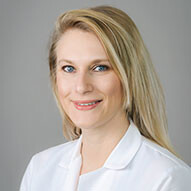Limb disorders in children
The team at the Children’s Health℠ Andrews Institute for Orthopaedics & Sports Medicine has extensive experience diagnosing and treating limb disorders, including knock-knees, bowed legs and leg-length discrepancy.
Our physicians tailor treatment to your child’s unique symptoms and offer comprehensive care with sophisticated, effective therapies such as guided growth for limb-length discrepancy.
What are limb disorders in children?
Limb disorders are a group of conditions that cause your child’s arms and legs to develop abnormally.
What are the different types of limb disorders in children?
Limb deformity - Some children have limbs that form abnormally as they grow. Common conditions include knock-knees and bowed legs.
Limb-length discrepancy - Most often, children with significant limb-length discrepancy (difference in length of the arms or legs) have a history of bone injury, infection or disease. Sometimes, neurological conditions or arthritis are the cause.
What are the signs and symptoms of limb disorders in children?
Difficulty using limbs properly in actions like throwing, walking and running
Noticeable deformity or significant difference in the length of one limb versus the other
Pain in affected limb or nearby joint
How are limb disorders in children diagnosed?
Limb disorders are diagnosed with a physical examination and a review of your child’s medical history. We will also order an imaging scan to help with the diagnosis.
X-ray - Uses invisible electromagnetic energy beams to take detailed images of the bones in both limbs (affected and non-affected) to make a comparison
CT (computed tomography) scan - Uses X-rays to make detailed images of the affected and non-affected limb for comparison
Physical exam - Looks at your child’s limbs and measures limb-lengths to test for discrepancy
What are the causes of limb disorders in children?
Bone and joint infections, such as osteomyelitis
Bone injuries such as fractures — especially near the growth plate
Hip joint conditions, such as developmental dysplasia of the hip (DDH) and hip dysplasia
How are limb disorders in children treated?
A child diagnosed with a limb disorder can still live a normal life with the help of our multidisciplinary team. We bring together specialists with considerable expertise to treat the full range of potential conditions.
Nonsurgical treatments
Orthotics - Shoe lifts for children with minor leg length discrepancy
Bracing - Leg braces to correct knock-knees or bow legs
Surgical treatments
Guided growth procedure - Used to correct knock-knees and bowed legs in children, this minimally invasive surgery attaches screws and a small, figure eight-shaped plate to the bone. When attached, these tools minimize pressure on the growth plate, allowing the bone to correct gently over time.
Limb-lengthening procedures - With this advanced procedure, physicians slowly pull the shorter limb’s bones apart using pins, to lengthen the limb and encourage natural regeneration. The limb is supported by a brace during the lengthening.
Limb-shortening procedures - These effective techniques shorten the longer limb by slowing its growth rate or removing a section of bone (bone resection is only done in teens who have stopped growing).
After treatment, our physicians work collaboratively with in-house physical therapists to create an individualized rehabilitation plan for your child’s unique needs.
Limb disorders in children doctors and providers
 Kathryn Bauer, MDOrthopedic Sports Medicine Surgeon
Kathryn Bauer, MDOrthopedic Sports Medicine Surgeon